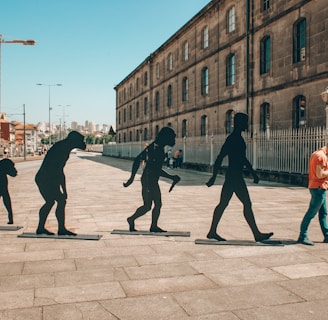The Evolution of Cardano
In this article, we'll take a closer look at the captivating history of Cardano, from its inception to its current status as a trailblazer in the world of blockchain.
IndieStakeAdmin
11/3/20232 min read


Introduction
Cardano, often referred to as ADA, has emerged as one of the most prominent cryptocurrencies in the blockchain space. But its journey to this point has been marked by innovation, dedication, and a relentless pursuit of creating a more inclusive and sustainable financial ecosystem. In this article, we'll take a closer look at the captivating history of Cardano, from its inception to its current status as a trailblazer in the world of blockchain.
A Vision Takes Shape (2015-2017)
Cardano's history begins with a vision. In 2015, Charles Hoskinson, one of the co-founders of Ethereum, embarked on a mission to create a blockchain platform that addressed the challenges faced by existing cryptocurrencies. With a team of brilliant minds and a commitment to peer-reviewed research, IOHK (Input Output Hong Kong) was born to develop Cardano.
The Birth of Ada (2017)
In September 2017, Cardano's native cryptocurrency, Ada (ADA), was launched through an Initial Coin Offering (ICO). This marked the beginning of Cardano's journey as a unique and ambitious blockchain platform.
Era of Research and Development (2017-Present)
What sets Cardano apart is its commitment to a scientific and research-driven approach. The platform's development goes hand-in-hand with academic rigor. Cardano's primary focus areas include:
Layered Architecture: Cardano is built in layers, separating the settlement and computational layers. This separation allows for greater flexibility and scalability.
Ouroboros Consensus Algorithm: Cardano employs the Ouroboros PoS (Proof of Stake) consensus mechanism, known for its energy efficiency and security.
Smart Contracts: The introduction of smart contracts in the Alonzo era brought Cardano closer to becoming a complete financial operating system.
Sustainability: Cardano prioritizes environmental and financial sustainability, paving the way for a more equitable and eco-friendly blockchain.
Community and Governance (2017-Present)
Cardano's growth has been driven by its active and engaged community. The Cardano Foundation, IOHK, and Emurgo have worked in tandem with the community to facilitate decision-making and network upgrades. Project Catalyst, a decentralized innovation fund, empowers the community to propose and vote on projects to improve the ecosystem.
Milestones and Achievements (2021-Present)
Recent years have seen Cardano reach several significant milestones:
Alonzo Upgrade: The Alonzo upgrade brought smart contract capabilities to Cardano, unlocking a world of decentralized applications and DeFi projects.
Growing Adoption: ADA has become widely available on various cryptocurrency exchanges, increasing its accessibility to investors.
Decentralization: Cardano's journey toward full decentralization is a remarkable achievement, with a growing number of stake pool operators and active stakers.
Conclusion: Cardano's Ongoing Legacy
Cardano's history is one of consistent progress, innovation, and dedication to its core principles. Its journey is far from over, with ongoing developments, partnerships, and community-driven projects paving the way for a future where financial systems are more inclusive, sustainable, and secure. As Cardano continues to evolve, its legacy in the world of blockchain is destined to be one of enduring significance.
© IndieStakeHub 2024
The content we provide is for educational and informational purposes. It is not intended as financial advice. Any investment decisions should be based on your own research.
